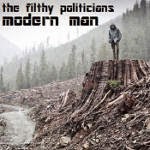A report by the RCMP’s Critical Infrastructure Intelligence Team reveals that Canada state surveillance of, and rhetoric about, grassroots environmental activists is not much different than in the US. We see the same false suppositions:
- The well being of the people aligns with that of exploitative corporations which destroy landbases and poison the land, water, and air
- Those defending land for current and future human and non-human inhabitants are working against the well being of the people
- National security is more dependent on the 1% making massive profits than on a living landbase supporting the 100%
- Peaceful defenders are “extremists” for not accepting the above premises and not allowing governments and corporations to do as they please
- Burning fossil fuels is not proven to contribute to climate change
- Sabotage against industrial machinery (itself responsible for murder of actual living and breathing humans and non-humans) is “violence”
- In fact, civil disobedience or anything else that breaks their rules to challenge their power is “violence”
Amongst others named or hinted at as threats are Deep Green Resistance New York, Zoe Blunt of Forest Action Network, and the Unis’tot’en Camp. all operating as aboveground, not criminal, organizations.
Michael Toledano wrote an excellent article for Vice, including quotes from interviews with many of the activists highlighted in the report. He ties the leaked RCMP paper into proposed Bill C-51, which would drastically ramp up law enforcement powers, allowing a “preventive” seven day detainment of those who “may” commit a violent crime. How helpful of the RCMP report to clarify that anyone opposing industry is part of an unpredictably violent movement! Tolenado contrasts this chilling official perspective with his own first-hand experiences reporting on protest actions in Canada.
It’s worth reading the entire piece for an understanding of the lies government agents tell themselves and ultimately the people, a glimpse into the many struggles taking place across Canada, and the indomitable spirit of resistance which won’t back down in the face of increased state repression. As Zoe Blunt says:
“Now when push comes to shove we’ll find out exactly how repressive and violent this government is. They are the ones who are violent. They’re the ones who are criminals. They’re the ones willing to destroy ecosystems, habitats, watersheds. They’re the ones who are willing to put our entire coastline at risk, and everything that depends on this landscape, everything that depends on these ecosystems is put at risk when they put these projects through.
“They’re looking at civil war. If they want these pipelines they’re going to get it over our dead bodies.”
Read the article at Anti-Oil Activists Named as National Security Threats Respond to Leaked RCMP Report




